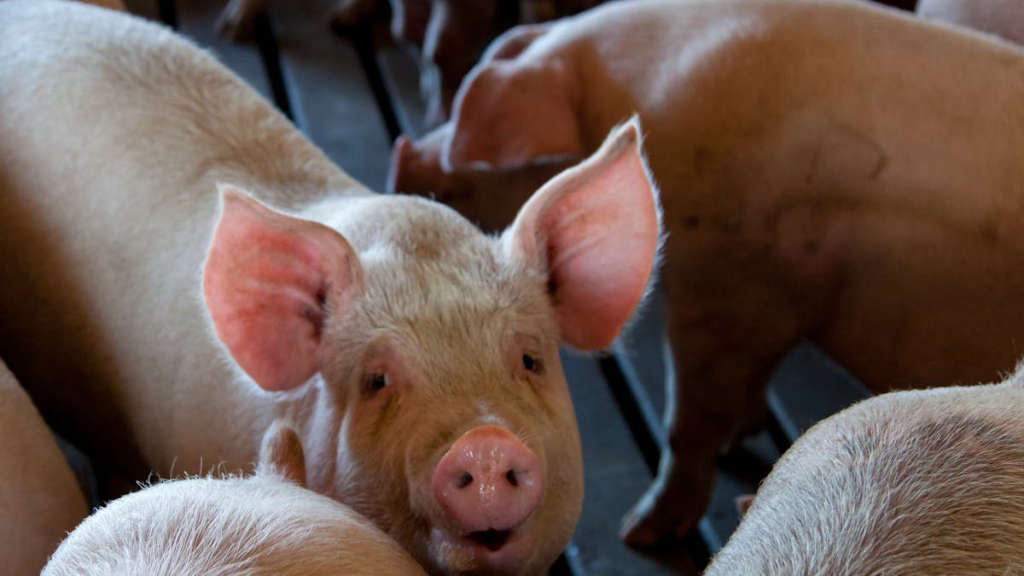As we venture into the realm of animal care, the landscape of livestock health is experiencing remarkable transformations. Innovative technologies and practices are redefining how we approach the welfare of our animals. This evolution not only benefits farmers but also enhances the quality of products we consume. By improving livestock health, we ensure a healthier food supply and a more sustainable future for agriculture.
Main Points
- Emergence of precision farming techniques.
- Integration of telemedicine in animal care.
- Advancements in nutrition and feed formulations.
- Utilization of wearable technologies for monitoring health.
- Innovations in disease prevention and biosecurity measures.

Harnessing Technology: How Wearable Devices Are Enhancing Livestock Monitoring
The agricultural landscape is rapidly evolving, and technology plays a pivotal role in this transformation. Among the many advancements, wearable devices stand out in their ability to revolutionize livestock monitoring. Farmers can now harness these tools to improve the well-being of their animals, enhance productivity, and ultimately drive efficiency in their operations.
Understanding Wearable Devices
Wearable devices, often akin to fitness trackers for humans, are becoming increasingly popular in the agriculture sector. These gadgets can be embedded within collars, ear tags, or even harnesses, allowing farmers to track vital signs and behaviors of their livestock in real-time. The integration of technology with livestock management has proven to be a game-changer for many producers.
- Health Monitoring: These devices constantly monitor the health of animals. By collecting data on heart rate, temperature, and movement, farmers can detect early signs of illness.
- Behavioral Insights: Understanding livestock behavior is crucial. Wearable devices help identify patterns, which can indicate stress or discomfort, allowing for timely interventions.
- Location Tracking: Knowing where each animal is located on a farm can prevent losses. Wearables equipped with GPS technology provide real-time location updates, which enhances security and safety.
The Benefits of Wearable Technology
The advantages of implementing wearable technology in livestock operations are multifaceted. For instance, these devices facilitate better decision-making through data analysis. Farmers can not only respond to health concerns more swiftly but also adjust their farming practices based on the information gathered. Additionally, by streamlining operations, they can reduce costs associated with traditional monitoring methods.
Challenges and Considerations
Despite the numerous benefits, adopting these advanced technologies is not without its challenges. There can be confusion surrounding the initial investment versus the long-term savings. Furthermore, some farmers may experience a learning curve when integrating these devices into their operations.
- Cost of Implementation: Assessing whether the benefits outweigh the initial investment can be tricky.
- Data Management: Handling the vast amounts of data generated by these devices requires effective strategies.
- Reliability of Technology: Dependence on technology poses risks if devices malfunction or data becomes corrupted.
In conclusion, while there are hurdles to overcome, the potential of wearable devices in enhancing livestock monitoring cannot be overstated. By leveraging technology, farmers not only improve the health and productivity of their animals but also contribute to a more sustainable and efficient agricultural system. As the industry adapts to these innovations, it’s clear that the future of livestock management is bright.

Precision Medicine in Animal Care: The Role of Genomics in Improving Livestock Health
The landscape of animal care is undergoing a transformative change, especially within the livestock industry. As traditional methods of managing animal health face limitations, precision medicine is emerging as a pivotal approach. This framework utilizes advanced genomic technologies to tailor treatments and management strategies specifically for the unique genetic profiles of livestock. In this article, we will explore how genomics contributes to improving the overall health and productivity of livestock, while also addressing some of the inherent complexities involved.
Understanding Genomics in Livestock
Genomics, the study of an organism’s complete set of DNA, provides invaluable insights into the genetic make-up of livestock. By analyzing genetic variations, researchers can identify predispositions to diseases and the potential for production traits such as growth rate or milk yield. This knowledge empowers farmers and veterinarians to make informed decisions that enhance animal welfare and operational efficiency. Ultimately, a more nuanced understanding of genetics can lead to healthier livestock populations.
The Importance of Precision Medicine
Precision medicine shifts the focus from a one-size-fits-all approach to a more personalized strategy, recognizing that each animal is genetically unique. For instance, traditional vaccines may not be equally effective across all breeds. By incorporating genomic data into vaccination strategies, veterinarians can administer treatments that are optimally designed for individual genetic profiles. This not only improves recovery rates but also reduces the risk of adverse reactions.
The Potential for Disease Prevention
One of the most significant benefits of utilizing genomics in animal care is its potential for disease prevention. By studying gene sequences, scientists can identify markers associated with susceptibility to certain illnesses. This insight allows for the development of targeted breeding programs. For example, animals can be selectively bred for traits that improve resistance to diseases such as respiratory infections or mastitis. Thus, a proactive approach enhances not only the health of individual animals but also the overall productivity of herds.
Challenges and Considerations
While the promise of precision medicine in livestock is clear, several challenges persist. The complexities of the genomic data can be overwhelming. Moreover, integrating genomic information into existing animal care protocols requires both time and resources. Farmers may find it difficult to navigate through the intricacies of genetic testing and interpretation. Therefore, it becomes crucial for industry stakeholders to collaborate, ensuring that veterinarians and farmers are equipped with the necessary knowledge and tools.
Conclusion: A Holistic Approach to Livestock Care
In summary, genomics plays a vital role in enhancing livestock health through precision medicine. The ability to tailor health management strategies to the specific genetic makeup of animals signifies a groundbreaking shift in veterinary medicine. While challenges exist, the ongoing learning and adaptation within the industry will lay the foundation for healthier animals and more sustainable farming practices. By embracing the complexities and potential of genomics, we can significantly improve the welfare and productivity of livestock globally.
| Key Concept | Description |
|---|---|
| Genomics | The study of the complete set of DNA in organisms. |
| Precision Medicine | A personalized approach to animal health care based on genetic information. |
| Animal Welfare | The overall health and well-being of livestock. |

Sustainable Innovations: Eco-Friendly Practices Transforming Animal Husbandry
In recent years, the field of animal husbandry has undergone a significant transformation. Our growing awareness of climate change and environmental degradation has led to an urgent need for sustainable practices. Farmers are increasingly embracing innovative methods that prioritize not just productivity, but also the wellbeing of the planet. This article explores some of these notable practices that are redefining the landscape of animal agriculture.
Regenerative Agriculture: A New Paradigm
One of the most promising shifts is the adoption of regenerative agriculture. This holistic approach focuses on restoring ecosystems while maintaining livestock health and productivity. Unlike conventional methods, which often deplete soil and biodiversity, regenerative practices enhance soil fertility and sequester carbon. For instance, rotational grazing allows animals to graze in a manner that promotes grass regrowth, reduces erosion, and ultimately leads to healthier pastures.
Innovative Feed Practices
Another significant innovation lies in animal feed. Farmers are now exploring alternative feed sources that are both eco-friendly and nutritious. Insects, seaweed, and byproducts from food production are being used as feed additives that not only lower the environmental impact but also improve animal health. This shift not only contributes to sustainability but also addresses issues of food scarcity and waste management.
Technology Adoption in Farming
Moreover, technology plays a crucial role in transforming animal husbandry. Precision farming, for instance, allows farmers to monitor the health and nutrition of their animals with remarkable accuracy. Drones and sensors provide real-time data about animal welfare and pasture conditions, enabling timely interventions. These innovations help minimize the use of resources and ultimately reduce the carbon footprint of livestock farming.
However, while these innovations are encouraging, challenges remain. The transition to sustainable practices often requires significant investment and a change in mindset. Farmers face hurdles such as access to training and resources. Despite these challenges, the potential for a more sustainable and resilient agricultural system is within reach.
In conclusion, the landscape of animal husbandry is evolving. The emphasis on sustainable practices, regenerative agriculture, innovative feed solutions, and technology adoption is paving the way for a more environmentally friendly future. As we navigate these changes, it is essential to support farmers and encourage the implementation of these eco-friendly practices. By fostering this shift, we can create a healthier planet for future generations.
Conclusion
In conclusion, prioritizing livestock health is vital for ensuring the well-being of our agricultural systems. Farmers and stakeholders need to recognize that a healthy herd leads to enhanced productivity and sustainability. By investing in proper veterinary care and preventive measures, we not only improve the lives of our animals but also contribute positively to the environment. Ultimately, understanding the intricacies of livestock health can lead to more robust farming practices, fostering a better future for both animals and those who depend on them.
Frequently Asked Questions
What are the common signs of ill health in livestock?
Common signs of ill health in livestock include decreased appetite, lethargy, abnormal behavior, coughing, diarrhea, and changes in body temperature or posture.
How often should I conduct health checks on my livestock?
Health checks should be conducted regularly, ideally at least once a week, but newborns or sick animals may require daily inspections.
What are some preventive measures for maintaining livestock health?
Preventive measures include proper nutrition, regular vaccinations, maintaining cleanliness in living conditions, and providing adequate access to water and shelter.